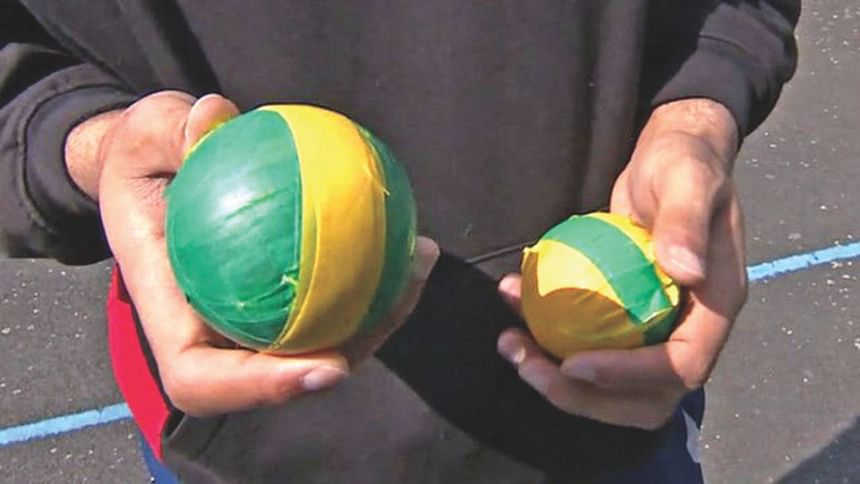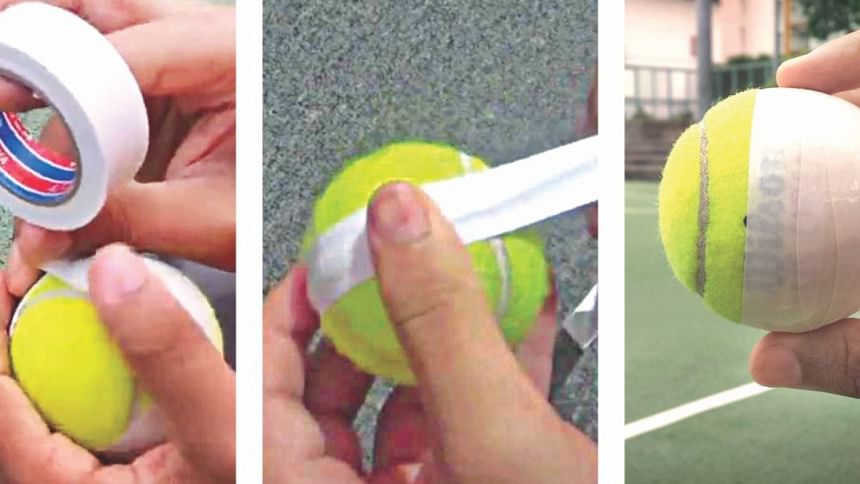The tale of the tape

Every once in a while, a meme showing an audio cassette and a pencil does rounds on the social media sites, with the caption -- "future generations will never know about this unique relationship."
There could be another meme along similar lines showing a tennis ball and a roll of electrical tape; only most of the world, regardless of the generation the viewer belongs to, will probably have no clue about this particular unique relationship.
But show it to a Bangladeshi, Pakistani, Sri Lankan or Indian and thoughts will immediately dart to the field, or alley, of cricket. For such people, even long after they have stopped playing the truly beautiful game, a roll of electrical tape will conjure images of a shiny red ball much more than stray wires, which is what the tapes were originally intended for.
There is much in common with the audio cassette meme. As rewinding and forwarding tapes used to drain batteries from our ever-so-precious walkmans (#blastfromthepast), the ingenuity of the not-so-well-off music lovers was employed, and the solution: insert a pencil into the cassette spokes and wheel the tape around till you reach the spot you want to reach. If you still do not get it, take comfort in the knowledge that you were never meant to.
Tape tennis cricket was similarly born out of necessity, but unlike the cassette-pencil relationship that was a victim of technological advances, this partnership has sustained and, it can be argued, has had an impact on a grander stage.
When boys got their hands on their first bat, they usually started out with a tennis ball, gathering some buddies on any stretch of land they could lay claim to for the evening. At that age, predominantly pre-teens, ambitions are big and abilities are small. Tennis balls are good fun; but the eye of the dreamer is on the red, hard ball. Tennis balls are soft, their bounce and zip off the surface very much unlike the cork-and-leather cricket ball.

Unfortunately, that jump to the real ball is not easily made. Venues of childhood cricket matches are usually strips of alley roads with residential buildings flanking them. So, playing with a cricket ball there would basically have resulted in numerous broken windows and angry aunties, dented cars and apoplectic drivers, injured bystanders and livid medical-bill-holding parents -- all resulting in a very short-lived claim to a cricket strip. This is not idle speculation, it has been tried, and failure acknowledged.
So into the breach stepped the humble electric tape. No, it is not an exact substitute for a cricket ball, but it is a very happy medium. The two or three layers of tape (half a roll's worth, give or take) hurt much more than a tennis ball ever could if a guy bowling with some pace hit you, but it was mostly not hard enough to cause lasting dents to cars or smash windows, or break legs for that matter.
Most importantly, it is as good a preparation for real-ball cricket as possible. Many coaching clinics have one net devoted to tape tennis cricket in order to prepare its practitioners for the more serious business of the cork and leather. The zip off the surface and the nature of the bounce is much closer to the genuine article than a tennis ball. A tennis ball does not encourage bowlers to bowl fast, and takes much more spin. A taped ball has young quicks excited, and if you happen to bowl spin you are better off practicing with a taped ball before moving up to the real deal, which does not spin as much as the tennis ball. The batsman too get better purchase for their shots as the heavier taped ball travels farther than it would without the tape.
Also, with the tape being roughed up, there is also the possibility of swing -- most tape tennis balls have a proud seam formed by layering the tape in a single file around the centre of the ball.
Among any group of these budding cricketers, there will inevitably be one who is a bona fide expert at putting on the tape. So along with the boy who has the bat, this expert wrapper enjoys a higher position among equals. A taped ball, if done correctly, can last up to 20 overs. That is important, because once the utility of the electric tape became obvious, it was not just confined to narrow alleyways: it mushroomed into the preferred material of cricketing projectile all over, be the venue an alleyway or an expansive field, rare though they are. Hence the numerous neighbourhood cricket tournaments that always employ the taped ball.
Most of Bangladesh's pacers had their start in tape tennis cricket. Mustafizur Rahman even played tape tennis cricket while on vacation in his beloved Tetulia, immediately after returning from his stint in the Indian Premier League.
Pakistani legends started out on the streets of Lahore and Karachi with a tape tennis ball. Indians, for some reason, have not cottoned on to it as much. Maybe that is why Pakistan and Bangladesh produce fast bowlers while India have barely had one in their entire history. That, however is idle speculation -- nothing can really explain India's pace drought. What is certain, however, is the place tape tennis cricket holds in our cricketing tradition, and as it is one that grew organically in response to our unique circumstances, long may it continue.
By STS
Photo: Collected

 For all latest news, follow The Daily Star's Google News channel.
For all latest news, follow The Daily Star's Google News channel. 



Comments